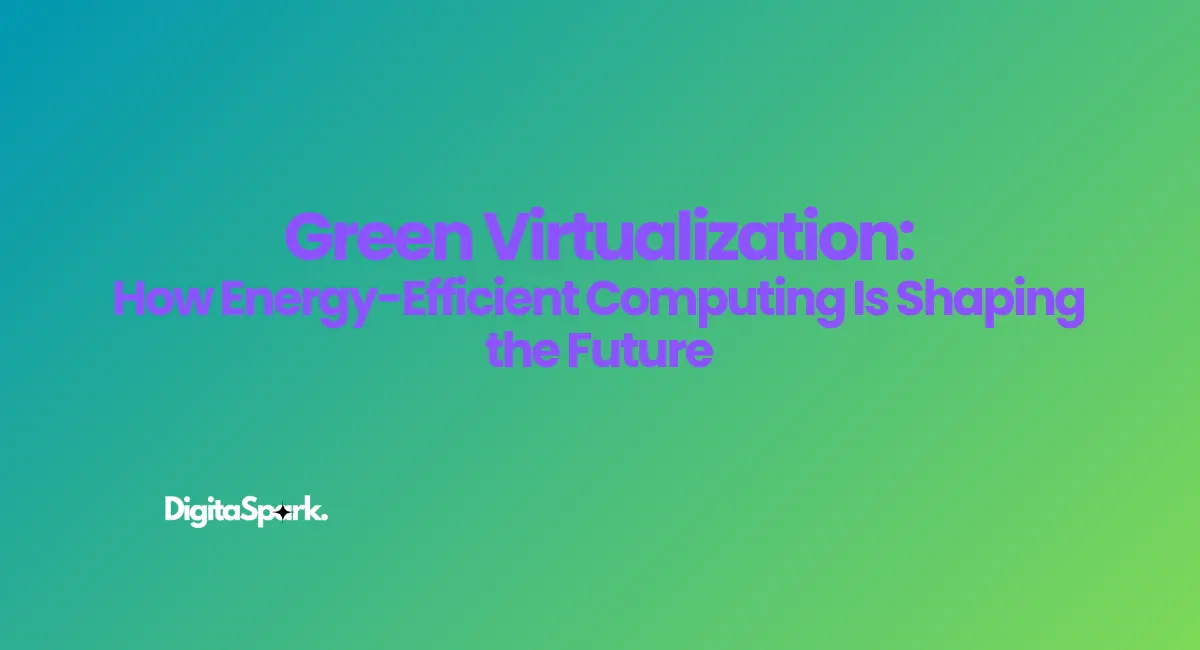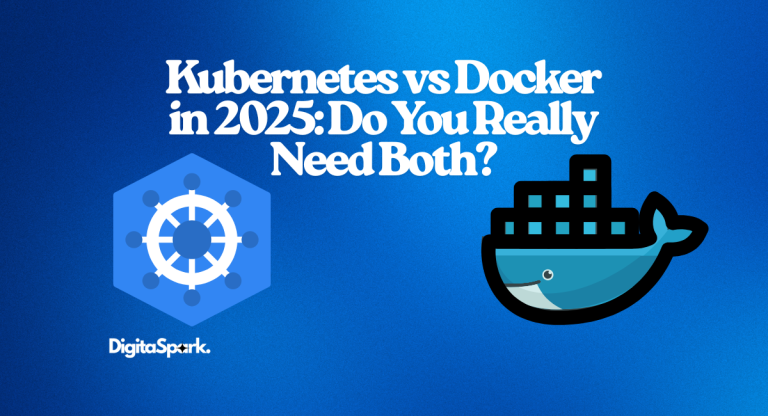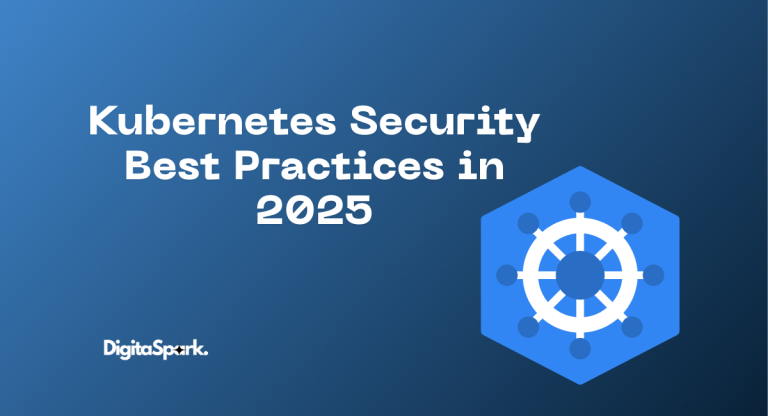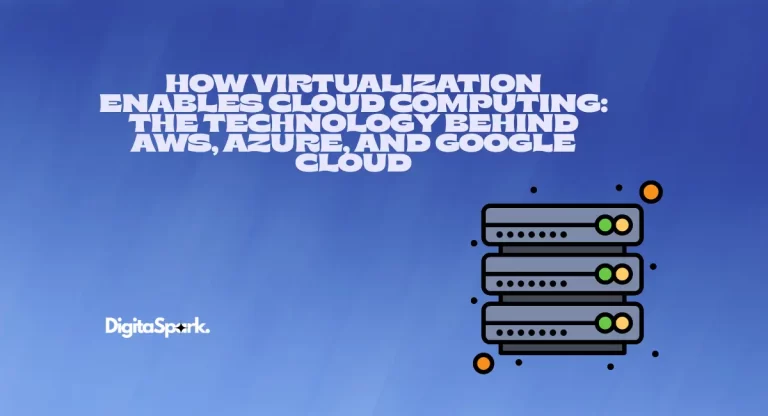Green Virtualization: How Energy-Efficient Computing Is Shaping the Future
If there’s one thing that defines our technological age, it’s our relentless pursuit of efficiency. We’ve engineered systems to be faster, smaller, and smarter—yet we’ve often overlooked a critical factor: making them cleaner.
Behind every streaming movie, every cloud process, and every AI decision, a vast, interconnected web of servers hums away, constantly drawing power. For years, we simply accepted this massive energy consumption as the unavoidable price of progress.
But a fundamental shift is underway. A collective realization is dawning among tech giants, governments, and businesses alike: the future of computing cannot be built on raw performance alone. It must be built on sustainability. And at the very heart of this quiet revolution sits a familiar technology, now being reimagined for a new era: virtualization.
It’s shedding its old skin, emerging as something cleaner, more intelligent, and profoundly more responsible. Welcome to the dawn of green virtualization. If you’re unfamiliar with the concept of virtualization, I have written an in-depth blog.
From Virtual Efficiency to Environmental Awareness
When virtualization first entered the mainstream, it was revolutionary. Running multiple operating systems on a single physical machine seemed like magic. Companies quickly embraced it because it allowed them to consolidate servers, reduce hardware costs, and simplify maintenance. The logic was simple: fewer machines meant lower electricity bills.
For a while, that worked. Then the cloud happened—and suddenly, virtualization was everywhere. Massive data centers sprouted across continents, each one packed with racks of machines running countless virtual machines. The same technology that once promised efficiency had, ironically, become part of the energy problem. Cooling systems roared, idle VMs sat running 24/7, and the savings began to fade.
That’s when the industry had to pause and rethink. Green virtualization wasn’t about squeezing a few more percentage points of efficiency out of servers—it was about reimagining how virtual environments could operate in harmony with the planet. It’s the point where digital optimization meets environmental awareness.
What Exactly Is Green Virtualization?
At its heart, green virtualization is the practice of designing and managing virtual systems to minimize their environmental footprint. It’s about smarter workload placement, cleaner energy sources, and reducing idle waste.
In traditional virtualization, the goal was performance per dollar. In green virtualization, it’s performance per watt.
This shift changes everything—from how hypervisors are built to how data centers are powered. A green virtual infrastructure doesn’t just operate efficiently; it thinks efficiently. It measures power consumption, predicts demand, and adapts on the fly.
Think of it as virtualization with a conscience—where energy is treated as a first-class resource, not an afterthought.
The Rise of Green Hypervisors
Every virtualized system relies on one key component: the hypervisor. It’s the silent layer that allocates CPU cycles, manages memory, and isolates workloads. For years, it focused purely on performance. Energy was someone else’s problem.
That’s no longer true. Modern green hypervisors are now aware of power consumption at every level. They can move workloads away from underutilized servers and power those idle machines down. When demand spikes, they bring them back online seamlessly.
Some systems even sync with renewable energy sources—ramping up when solar or wind generation peaks, then scaling down when clean power dips. It’s a subtle but transformative shift. Instead of treating energy as a constant, virtualization is learning to work with it.
Companies like VMware, Microsoft, and Red Hat are already building energy awareness into their virtualization platforms. KVM and Xen now support power policies at the hypervisor level. Even Kubernetes—born in the world of containers—is integrating power-aware schedulers that consider energy profiles alongside CPU and memory.
It’s a new kind of intelligence for infrastructure—one that knows when to sprint and when to rest.
Renewable-Powered Data Centers: The New Backbone of IT
Of course, even the smartest virtualization layer can only go so far if the electricity feeding it still comes from fossil fuels. That’s why the next frontier of green IT lies in renewable-powered data centers.
Tech leaders are pouring billions into clean energy projects to run their vast networks of servers. Google already matches 100% of its consumption with renewable energy. Microsoft has pledged to be carbon-negative by 2030. Amazon is building wind and solar farms to power AWS regions directly.
But the innovation doesn’t stop at sourcing clean power. The physical design of data centers is changing too. Many are now built in colder climates to cut down on air conditioning. Some use seawater or underground aquifers for natural cooling. Others employ AI-driven thermal systems that predict temperature changes and adjust airflow before hotspots even form.
The modern data center isn’t just a warehouse of servers anymore—it’s an organism. It breathes, adapts, and optimizes itself for both performance and sustainability.
Smarter Workload Management
One of the quiet revolutions within green virtualization is when workloads run, not just where.
Traditional systems execute tasks as soon as they’re queued, regardless of the energy source or cost at that moment. But with intelligent workload management, timing becomes a sustainability tool.
Picture this: workloads migrate across regions in real time—not just for availability, but for cleaner energy. When solar power is abundant in one area, tasks shift there. As the sun sets, they move to another region running on wind energy. The applications never stop running, but the planet breathes a little easier.
Cloud providers are already experimenting with this kind of energy-aware orchestration. Machine learning models forecast renewable output hours or even days ahead, then align workloads accordingly.
It’s like data following the sunlight—a poetic kind of efficiency that turns sustainability into strategy.
Extending the Life of Hardware
Sustainability isn’t only about electricity. It’s also about the physical machines themselves—the servers, racks, and switches that make it all work.
Every new server comes with a hidden carbon cost from manufacturing, transport, and disposal. Green virtualization helps slow that cycle down. By maximizing hardware utilization, spreading workloads intelligently, and keeping performance balanced, organizations can extend hardware lifespans significantly.
Older machines that no longer suit heavy workloads can be repurposed for testing or secondary environments instead of being discarded. Some companies even adopt circular IT models, refurbishing decommissioned servers for use in backup data centers or donating them to educational and research institutions.
It’s not glamorous, but it’s effective—a quiet, behind-the-scenes way of making computing more responsible.
Measuring What Matters
You can’t improve what you can’t measure—and in green virtualization, metrics are everything.
Two numbers stand out: Power Usage Effectiveness (PUE) and Carbon Usage Effectiveness (CUE).
PUE tells you how efficiently a data center uses its energy (with 1.0 being ideal), while CUE measures the carbon impact of each unit of energy consumed.
Today’s green data centers track these metrics in real time. They display them alongside CPU, RAM, and I/O usage—because in the future, sustainability will sit right next to performance in every dashboard. Some hypervisors already estimate “energy cost per VM,” offering administrators a tangible view of how eco-friendly their workloads are.
Efficiency isn’t just technical anymore—it’s ethical.
The AI Advantage
If virtualization is the engine of green computing, AI is the brain behind it.
Machine learning systems are increasingly responsible for predicting energy demand, balancing renewable inputs, and dynamically tuning performance. AI can pre-schedule heavy workloads for times when renewable energy is most available, reduce CPU clock speeds during low demand, and even shut down cooling fans in sections of the data center when not needed.
What’s remarkable is how invisible all this feels. The system just gets smarter—learning from patterns, adjusting quietly, and optimizing sustainability in real time.
The result? A computing model that’s self-improving and planet-aware. The kind of automation that doesn’t just save money—it saves megawatts.
Edge Computing Joins the Green Movement
At first glance, edge computing might seem at odds with green goals. After all, distributing compute nodes sounds like it would use more hardware and energy. But the reality is more nuanced.
By processing data closer to where it’s created—instead of shipping everything to distant cloud centers—edge systems reduce both latency and energy spent on data transfer. Combine that with virtualization, and you get something powerful: lightweight, localized computing that can be powered by small-scale renewables.
Picture a solar-powered IoT hub managing smart agriculture or a wind-powered telecom node supporting remote connectivity. It’s a decentralized, resilient model of green IT—one where sustainability is built into the architecture itself.
The Challenges Ahead
None of this transformation is without challenges. Renewable energy infrastructure is expensive. Not every region has the same access to clean power. AI optimization, while effective, consumes energy in its own right.
And then there’s the cultural shift — getting IT teams to value energy efficiency as much as uptime requires time, training, and new incentives. But those barriers are shrinking. Rising energy prices and tightening environmental regulations are forcing organizations to rethink old habits.
What was once “nice to have” is quickly becoming non-negotiable.
The Future of Virtualization Is Green
Virtualization began as a way to make better use of hardware. Today, it’s teaching us how to make better use of energy.
Over the next decade, green virtualization will shape how data centers are built, how workloads are orchestrated, and how companies define success. Hypervisors will be energy-aware by default. Cloud platforms will compete not only on speed or uptime, but on sustainability scores.
It’s a quiet revolution — one taking place inside server racks, in orchestration code, and in the very philosophy of IT.
The next time you spin up a virtual machine or deploy a new app to the cloud, remember: there’s an invisible layer working beneath it all. One that doesn’t just care how efficiently your code runs — but how gently it treats the planet.
Because the real future of computing isn’t just virtual. It’s green.
If you’d like to explore how leading tech companies are embracing sustainable virtualization, check out VMware’s initiative on sustainable computing.







